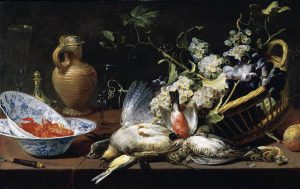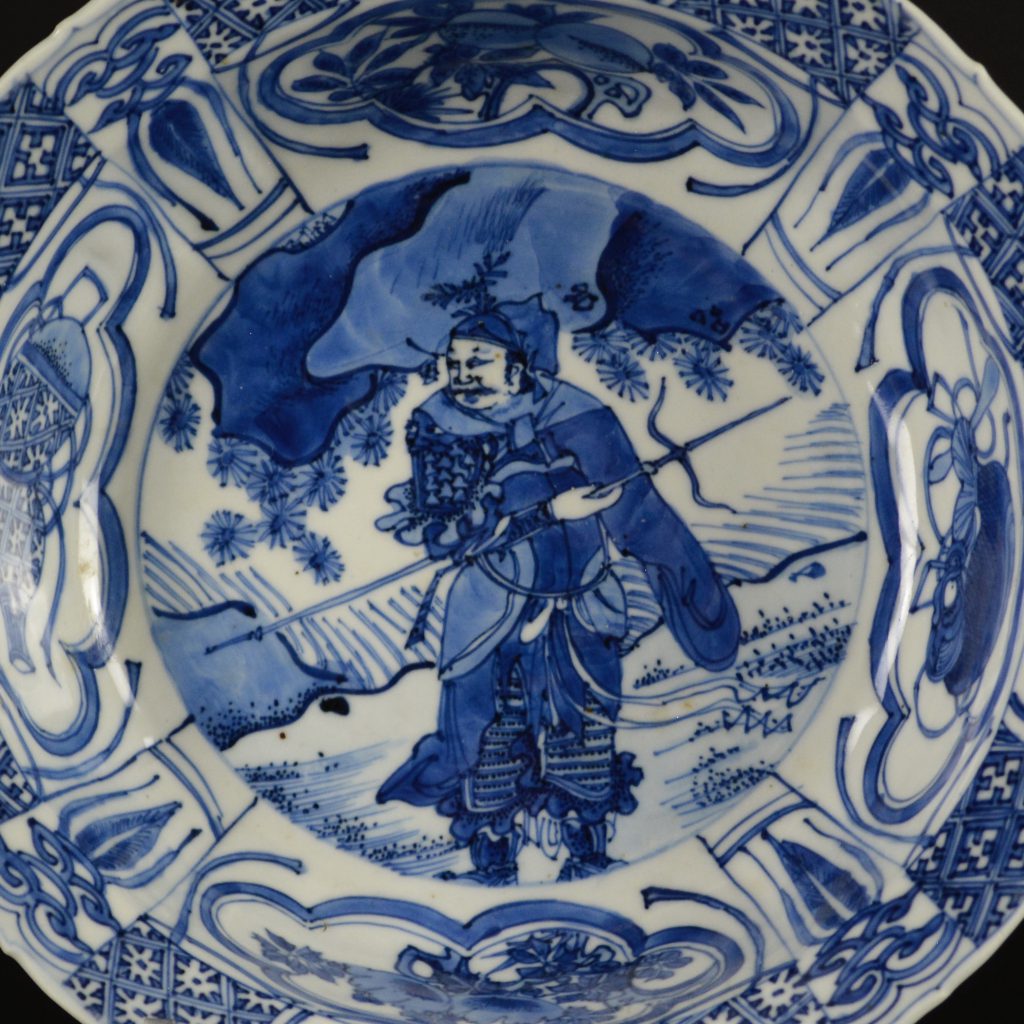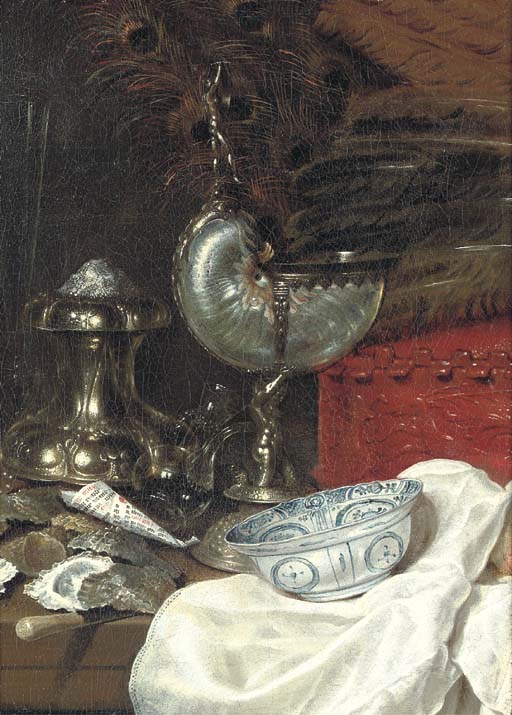
A Fine Wanli Kraak Porcelain Klapmuts Warrior Dish
A Finely Potted and Painted Wanli Porcelain Kraakware Klapmuts Bowl c.1590-1610. This high-quality Kraak porcelain bowl is lightly potted and crisply moulded. Painted with care and attention to detail there is energy to the painting which is undertaken in with a great variety of paint marks. These vary from graded washes to fine-lines, dots and light painterly touches. Decorated with a Chinese soldier in full armour holding a slender trident, of a type used for hunting. The cavetto is painted with a double gourd tied with ribbon, peaches and other auspicious objects. The border has peaches in panels among a diaper ground.
For more information about Kraak Ware porcelain you can go to the History section of our website-menu, or click on the link: Kraak Ware Porcelain.
SOLD
- Condition
- There is a fine sealed crack from the rim to above the footrim.
- Size
- Diameter 20.5 cm (8 1/8 inches)
- Provenance
- Robert McPherson Antiques. The John Drew Collection of Chinese and Japanese Ceramics (see biography below).
- Stock number
- 2 5 1 5 4
- References
- For a Kraak porcelain dish with a warrior see : Kraak Porcelain, a Moment in the History of Trade (Maura Rinaldi, Bamboo Publishing Ltd, 1989) page 100, plate 89.
Information
The John Drew Collection of Chinese and Japanese Ceramics :
John Drew was born in 1933 in Tideswell, Derbyshire, where his father was curate. The family moved to Norfolk whilst he was still a baby and his father became the rector of the parish of Intwood and Keswick. He was educated at Sedbergh School and after National Service in the R.A.F. being taught Russian, he went to Queens College, Oxford to read Greats (Classics). He spent nearly all his working life in various African countries as an archivist, moving to a post at Cape Town University in 1978. He remained in Cape Town after his retirement until his death in 2006. He had a great love of the English countryside (but not the climate) and this is shown in many of the pieces he collected. His taste was varied and ranged from Neolithic right through to the 18th Century. When we sent photograph to his home in Cape Town of pieces we thought he might be interested in, he would write long funny well observed letters back, wanting to add many of the items to his growing collection. Over the years we got to know him better and better, and during the last few years it was very rare for him to not want all the pieces we offered him. We knew his taste, even though his taste was so varied. This was in no small part because he had a very good eye and it was a pleasure finding things that interested him, because they were also very interesting to us. He never got to put his collection on display, something he hoped to do while on retirement in England, so it is with a mixture of pleasure and sadness that we offer these pieces from his collection. Each piece has a John Drew collection label, so when the collection is split up there will be some lasting record of the love and hard work he put into his two decades of collecting.
Kraak Porcelain

1612-13
Oil on panel, 55 x 85 cm
Private collection


Kraak Ware Exhibition May 2020


A nautilus cup with a silver salt, a red clay pot decorated with a prancing stag holding ostrich feathers on a partially draped table with a blue and white porcelain bowl, a knife, oyster shells and a piece of manuscript
oil on canvas: a fragment
21¾ x 16 in. (55.2 x 40.6 cm.) Christies, London.






















